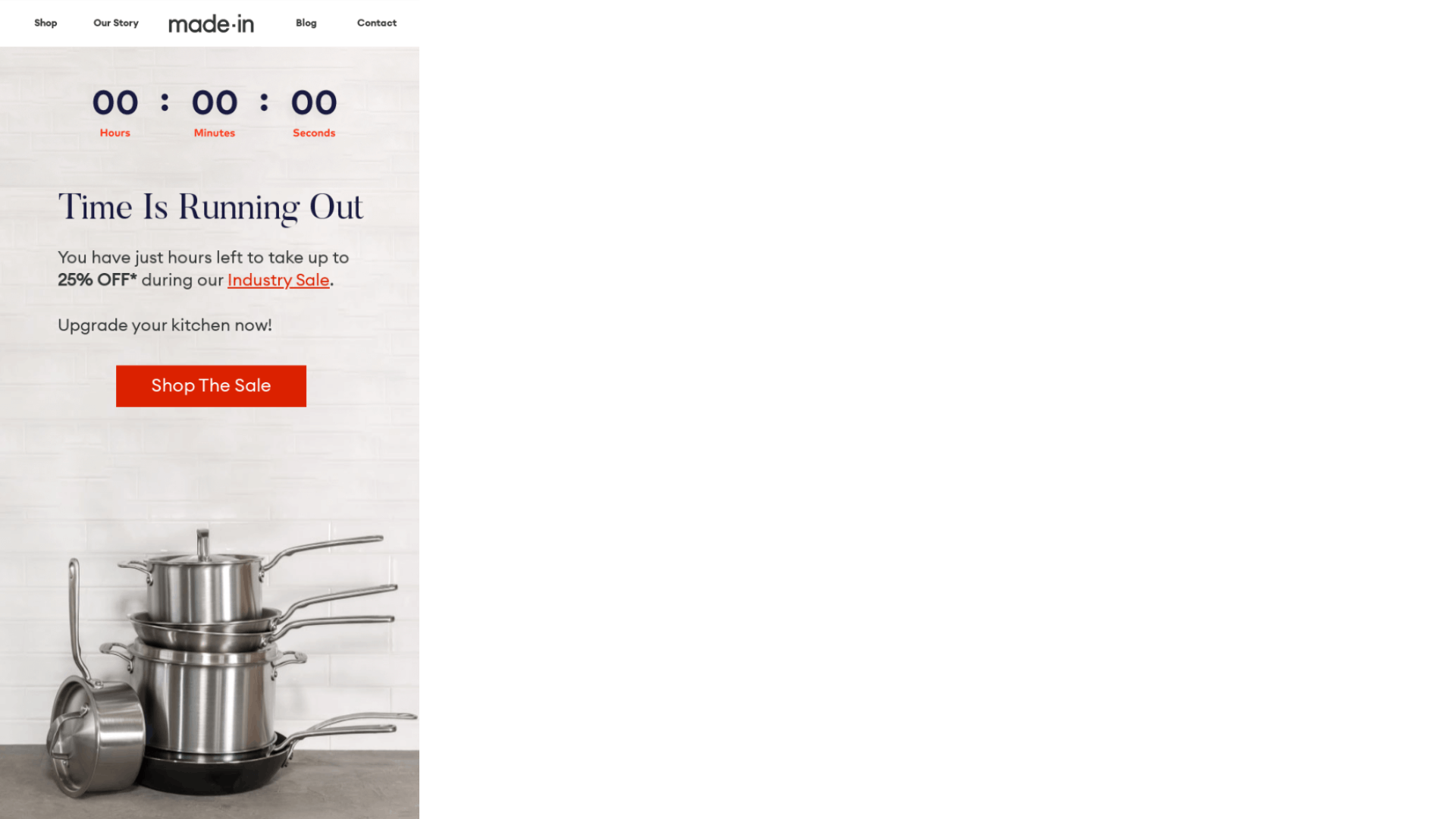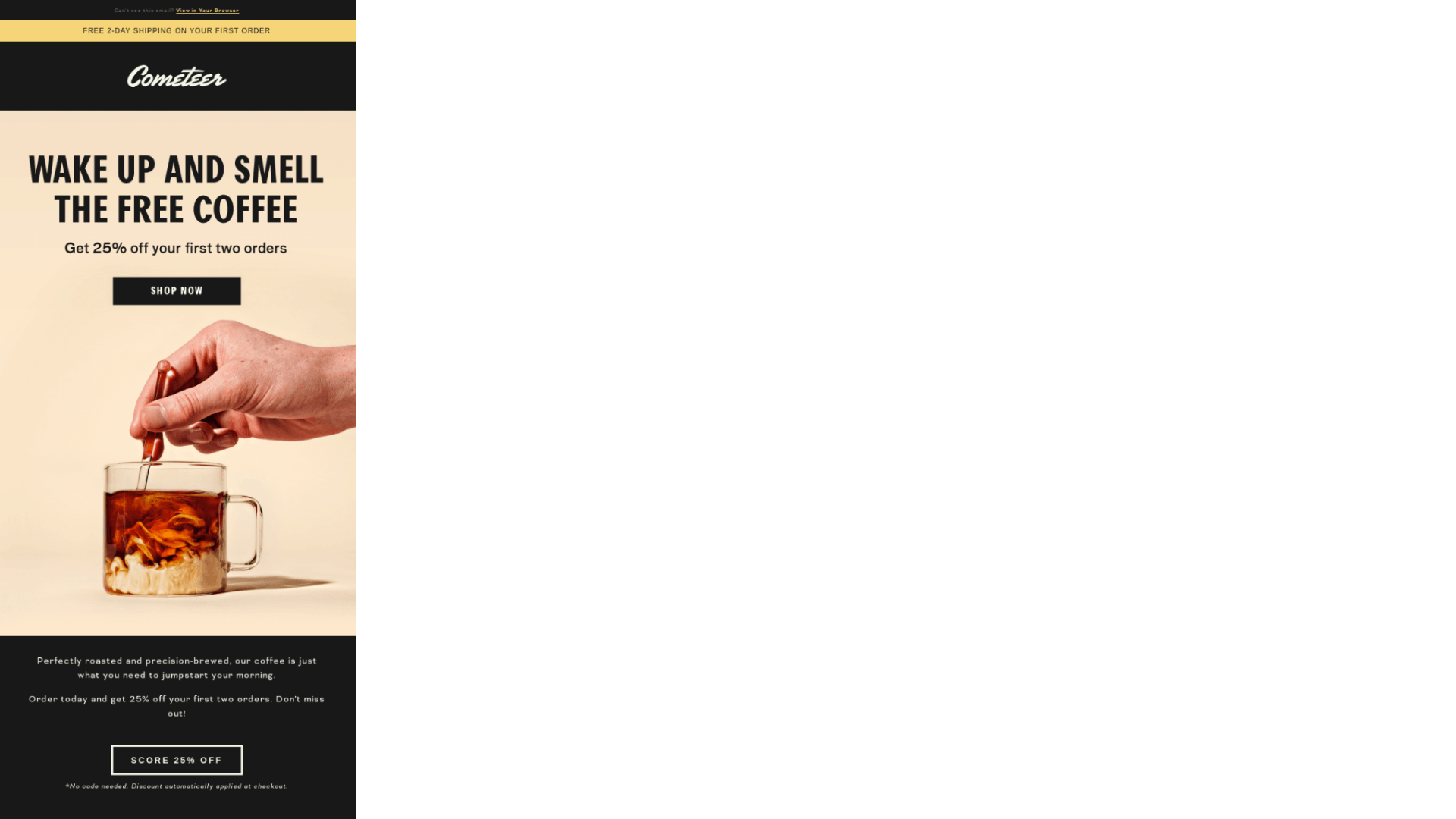Commerce7 has acquired WineDirect's SaaS division. Learn More
8 Email Marketing Best Practices that Drive Sales
Karen Urquhart 8 min
Nov 16, 2022Email marketing should be a staple in every brand's toolkit. It might not be the newest, most exciting form of marketing, but it works! When done right, email marketing can help grow engagement and drive between 20-30% of your total revenue.
If you’re just starting out with email marketing, or are looking to fine tune your skills, this article outlines eight best practices you should follow to optimize your emails and create your most lucrative campaigns yet.
1. Avoid using “No-reply” in the senders email address
A no-reply email is an address that uses the format “noreply@yourwebsite.com.” When a consumer agrees to receive email communications from your business, it means they want to learn more about your brand and what you do. By using a no-reply email address, it automatically gives the user the impression that they value the relationship with your brand more than you do since it blocks the ability to have two-way communication. Imagine the frustration of the user when they click “reply”, spend time crafting a well thought out email with helpful feedback, or a pressing question, only to receive an email back saying “Cannot deliver”.
Beyond limiting your ability to build a two way relationship with your customers, using a no-reply email can also significantly impact your delivery rates. The big issue with no-reply email addresses is that many spam filters from internet service providers and email providers are designed to filter out emails from these addresses. That means your emails could end up in your contacts' spam folder before they even get the chance to see it, causing them to miss out on important updates or amazing deals.
2. Keep it brief
Short emails are more likely to perform better. It's that simple. According to a study conducted by Boomerang - a productivity software platform that syncs with Gmail, emails with a word count between 50 - 125 words have the highest response rate. You should experiment with and test your emails to see what works best for your brand's audience but this is a great data driven guideline to help inform your decision making. The key takeaway here is to avoid lengthy emails and be concise to avoid losing your reader’s interest.

3. Keep it casual
If you want to build great rapport with your audience, using language they can relate to is a must. How you communicate with your audience plays a huge role in how they view your brand, and adding a relatable, human element to your marketing converts you from just another business trying to push their products to a more reliable, trustworthy brand. Talking directly to the customer in a language they understand, instead of talking at the customer in a stiff, professional tone can be the difference between a customer who makes a purchase and a customer who unsubscribes from your email list.

4. Personalize your emails
Delivering personalized content to a contact drastically increases the likelihood of them engaging with that content. Why? Because it helps create a human connection and adds a personal touch to your communications. Going out of your way to tailor your email marketing shows your customers you care, and this can have a significant impact on your revenue. In fact, marketers typically see a 20% increase in sales when their email campaigns are personalized. Suffice to say that it’s worth creating an email experience that is unique to each subscriber, which can be done in a number of ways. Here are just a few to help get you started:
- Greet your email recipients by their first name
- Contact a customer after their first purchase to thank them for their business
- Send an existing customer an email on their birthday with a special offer
- Follow up with customers when they abandon their cart to encourage them to complete their purchase
- Send personalized product recommendations, or educational content based on a customer’s purchase history
- Offer exclusive deals or promotions based on a customers unique relationship with your brand

5. Create the perfect subject line
An email is only as effective as its open rate. Think of the subject line as your first impression. From the moment you interact with a consumer, what you say will influence their decision to purchase, and emails are no different. The subject line is the first thing your subscribers see when they are scrolling through their already overflowing inbox, and it’s one of the only tools you have to convince them that opening your email is worth their time. That’s why crafting a thoughtful, compelling subject line is so important. Try these three tips to create the perfect subject line for your next email campaign:
- Keep it short and focused
Most email inboxes show about 60 characters of an email's subject line and that number dwindles down to approximately 30 on mobile. You should convey the topic of your email in about six to eight words to make sure your subscribers get the gist. - Place the most important information at the beginning
41% of emails are viewed on mobile. Yes, you read that right! Optimizing your subject lines for mobile is crucial. Placing the most important words at the beginning of the subject line will ensure important details aren't cut off from mobile viewers. - Use action oriented language
The goal of a subject line is to get people to click. Action based language like “See what's new!” or “Don’t miss out!” is a great way to create a sense of urgency. When a consumer feels the need to take action, it will drastically improve their chances of clicking into your email.
6. Have one strong CTA
CTA’s (Call to Action) are critical when it comes to email marketing. A marketing email without a call to action is like a sun roof on a submarine - impractical. CTA’s are what drive your reader to take action, and convert. Whether it's a newsletter, product launch, or promotion, having one clear, definitive call to action can do wonders for your KPI's. According to WordStream, emails with one singular call to action can increase clicks by 371% and sales by 1617%. Are you convinced yet? Similar to that of your subject line, your CTA should be short, concise and use action oriented words, in addition to being a bold, stand alone button for the best results.

7. Include your logo
Simple but effective. Your logo is a huge part of your brand identity, and including it in your marketing emails creates instant recognition for your readers. A study conducted by Red Sift and Entrust found that brand recall increased by 18% after a five-second exposure when including a logo in the email and the likelihood that the viewer made a purchase increased by 34% in emails where logos were included.
8. Add visual assets
Great copy mixed with complimentary visuals is a recipe for success. Visual content allows you to strengthen your message and convey information that you otherwise wouldn't be able to communicate. In fact, combining relevant images with text increases how much your audience remembers by 650%. Screenshots, videos, professional photos and even GIF’s can be used to add visual interest to your emails and increase overall engagement.
The best email marketing tools on Commerce7
- Commerce7 Campaigns
If you’re just starting out with email marketing, or you have a simple approach to your emails, Commerce7 Campaigns is an ideal option. It’s an email marketing tool built specifically to help you proactively engage with your customers and generate more revenue. With Commerce7 campaigns you can create and send emails to your subscribers and track the campaigns performance including sends, opens, clicks, bounces, and revenue generated. The user-friendly tool allows wineries to engage their subscribers with new content and promotions all while fostering leads to help grow their business. The tool offers pre-built templates available in the Commerce7 tenant under Marketing > Campaigns where you can implement customizations to align with your branding and display accurate content with minimal effort. Best of all? It’s free to use. - Klaviyo
If advanced segmentation and automation is more your speed, Klaviyo is a great option. Klaviyo is a powerful marketing platform that focuses on email and SMS marketing and can integrate seamlessly with Commerce7 through the Klaviyo integration by Digimatic. Klaviyo is free to use for up to 500 email sends per month, or up to 250 contacts and ranges between $20.00 - $1970.00 per month CAD if your business exceeds those limits. - Mailchimp
Similar to Klaviyo, Mailchimp is a marketing automation platform designed and developed for businesses using email to reach out to their target markets and is a fantastic option for more advanced email marketing. It is an all-in-one tool where you can manage your mailing lists, create custom email templates, and nurture and automate entire marketing campaigns. You’re able to integrate it with Commerce7 through the Mailchimp integration by Digimatic. Mailchimp is free to use for up to 2,500 emails per month or up to 500 contacts, and ranges between at $14.00 - $400.00 per month CAD if your business exceeds those limits.
By consistently applying these rules to your email marketing efforts you will see a boost in your email engagement, improve your click-through rate and drive more conversions. When you carefully curate your content and put thought behind your decisions, every email becomes a bonafide opportunity to grow your business.
Ready to create better shopping experiences?
See Commerce7 firsthand by scheduling a demo with our team.
Schedule a Demo